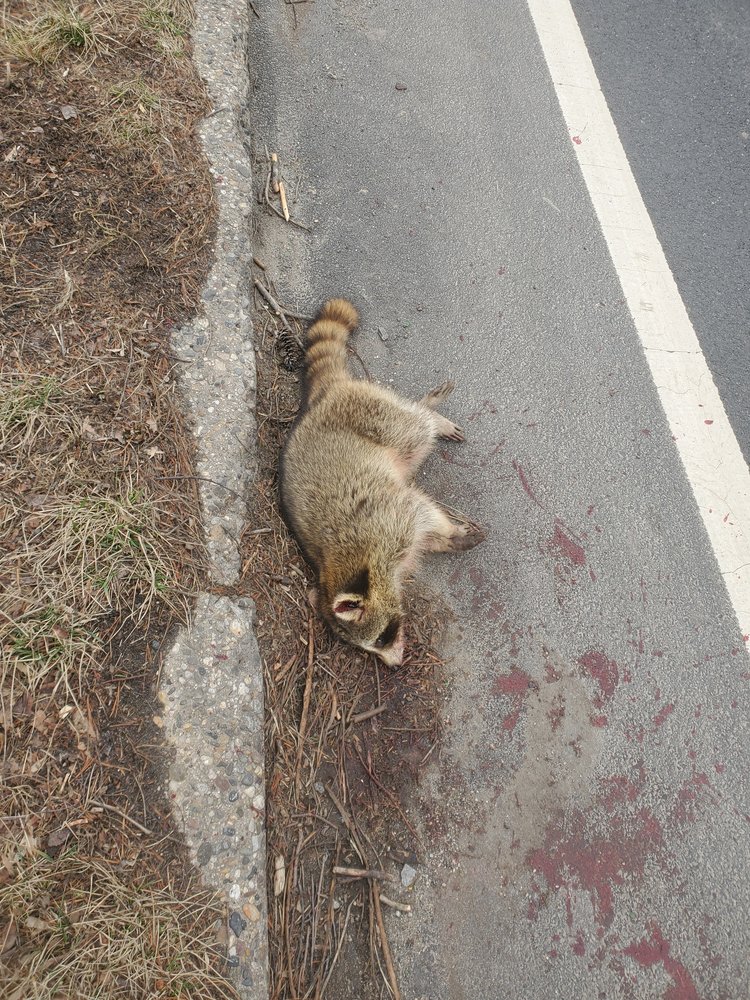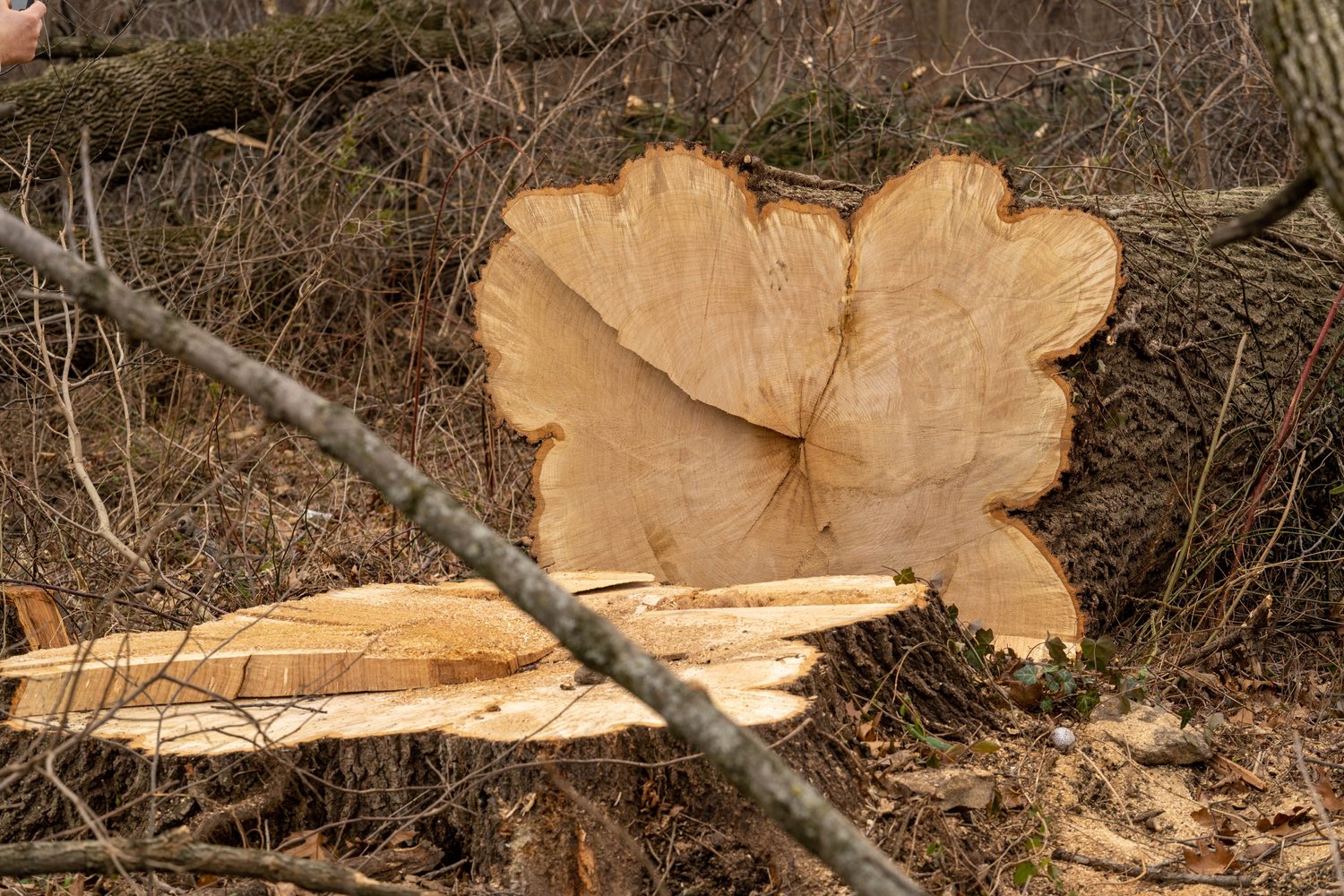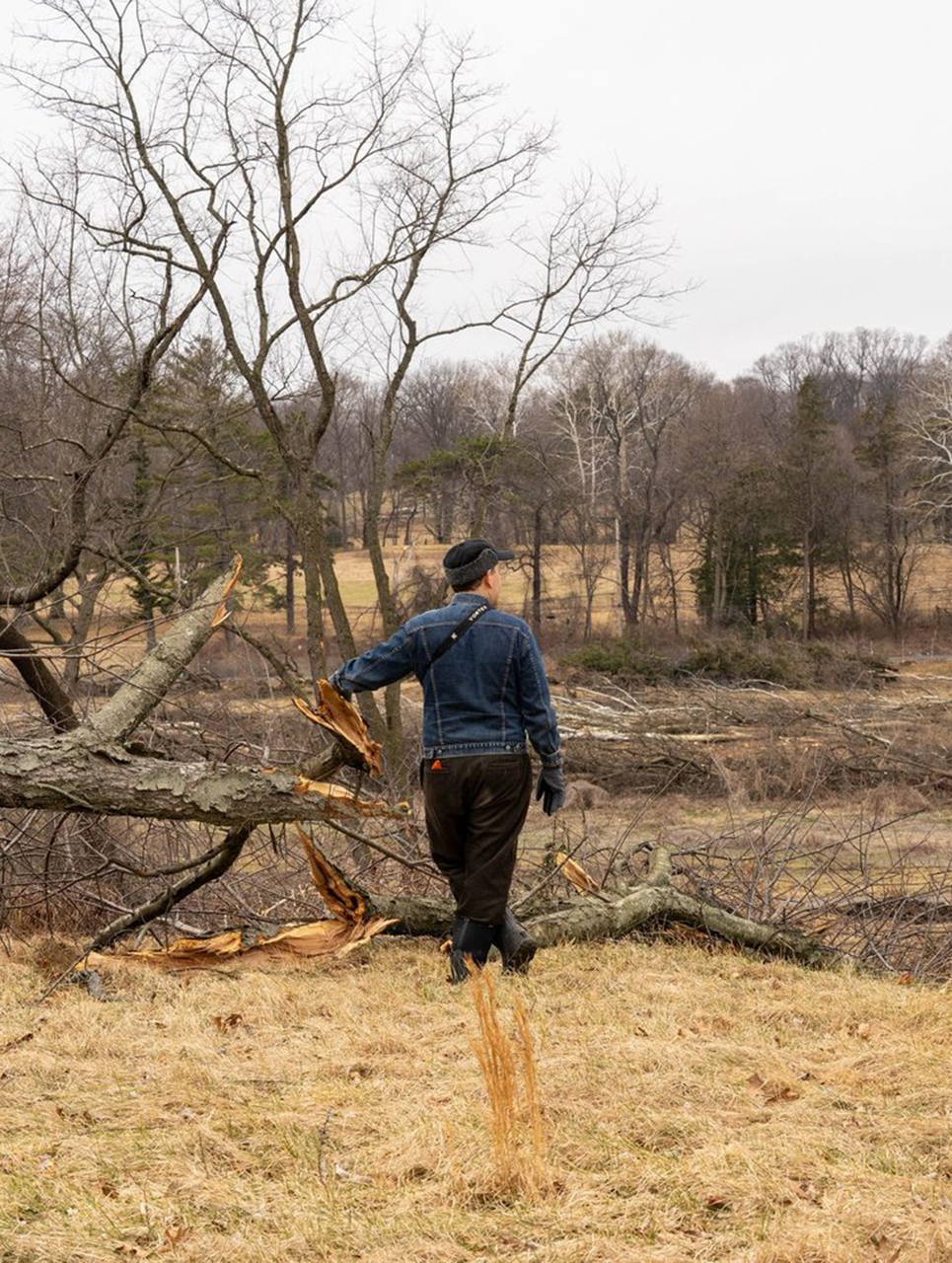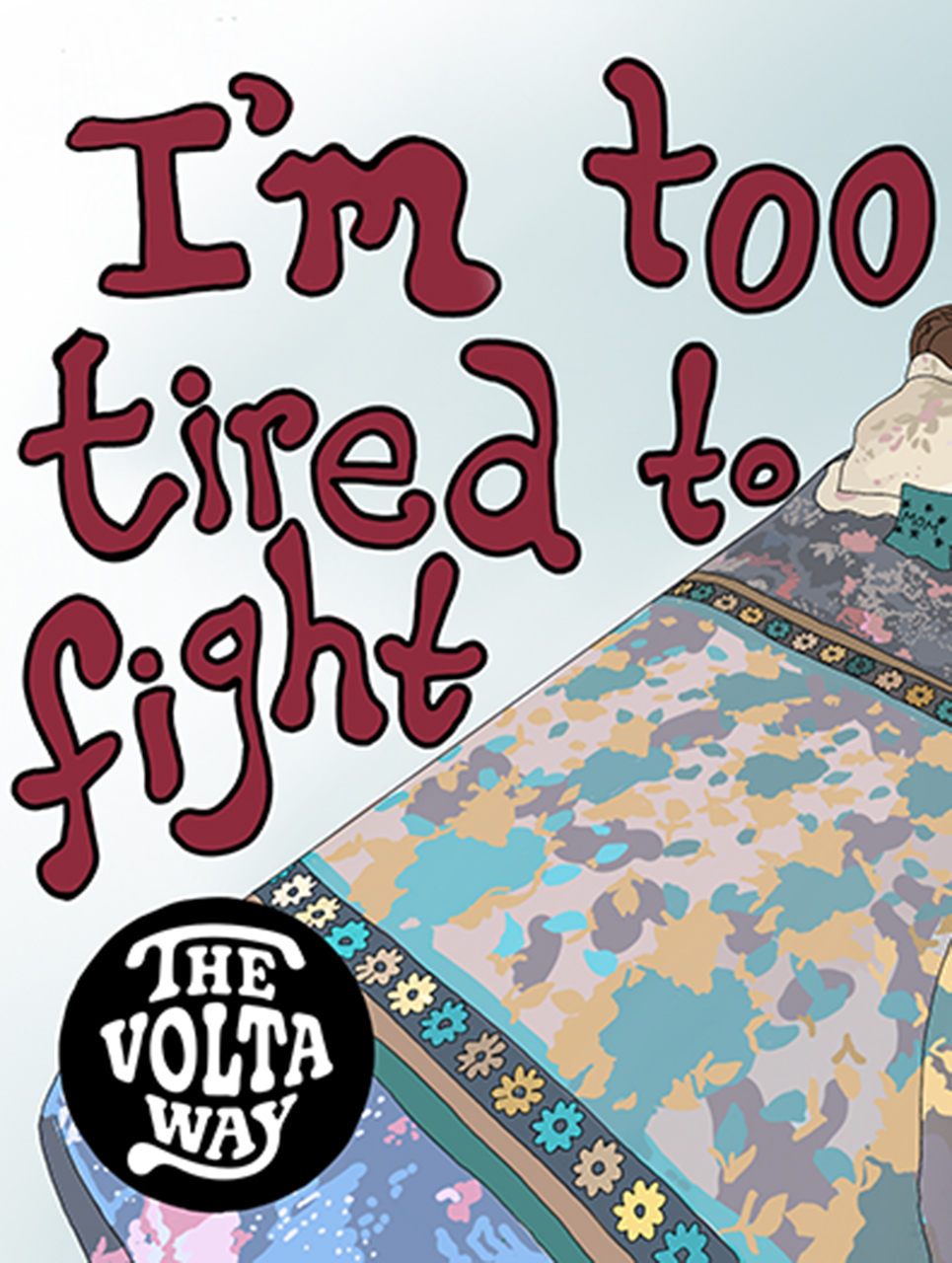I don’t know what was more depressing, the dead raccoon alongside Cardington Road at the edge of the freshly erected construction fencing, or the clearcut hillside it had died trying to reach.
Cardington cuts through the Cobbs Creek and Karakung golf courses in West Philly, and two weeks ago both sides of the road were fairways buffered by patches of forest. I wasn’t there to see the raccoon get run over, but my best guess is that it tried to cross the road, like it had perhaps hundreds of times before, but this time it found its way blocked by the fence.
On Thursday, when I found the raccoon dead against the curb, the woods to the east of the road were gone, virtually all of the trees cut down and strewn over the rolling hills of the course. Even if it could have gotten past the fence, it would have had nowhere to go.
I know (or should I say “knew”?) these woods well. The two publicly-owned golf courses adjoin the Haddington Woods section of Cobbs Creek Park at the western edge of the city, and the park is my family’s default spot for a hike in the woods. The golf courses have been closed since the fall of 2020 for renovations. As the pandemic shutdown drove us to spend even more time than usual outside, we expanded our activities into these newly quiet meadows.

In the winter we played in the snow and took note of the deer, fox and other animal tracks criss-crossing the fairways. In the summer we watched fireflies and tossed a Frisbee around. In the fall we watched common nighthawks catch bugs out of the air as they prepared for their migration to South America. These trees that have been cut down are trees that I know and love. The animals that called them home were my neighbors.
I am not the only person who feels this way. Local naturalists such as Ed Edge shared news of the destruction Wednesday on a Telegram group chat for naturalists. Edge had been monitoring two great horned owl nests, both of which were in trees that were cut down.
A volunteer with the Cobbs Creek Ambassadors, which coordinates cleanups along the creek, sounded the alarm to that group about large numbers of trees being cleared—far more than would be expected than in the creekbed restoration work that had been publicized as part of the course renovation.
Beth Tiegan, also a Cobbs Creek ambassador, went to see it herself.
“The vast majority of trees that were cut were mature, healthy, native trees along Cobbs and Indian Creeks,” she says. “Lots of sycamore, tulip poplar and black cherry, and well as walnut, maple, oak, etc. Vast areas that were previously forested were completely torn up and had huge machinery run through them.”
Joshua Lippert, an environmental advocate in Philadelphia who until recently served as the city’s flood plain manager posted about the renovation on his LinkedIn page.
“City of Philadelphia once again perpetuating environmental injustices of decades past on city owned land,” he wrote. He included publicly available zoning documents mapping the tree removals and, when I called him to talk about it, he estimated that more than 120 acres of woods would be lost to this project.
Losing 120 acres of woods means losing about 30,000 tons of carbon storage.
I had, until this week, accepted the course renovations without protest. I figured that at some point the work would be done and my family would cede the courses back to the golfers and the animals.
The group conducting the work, the Cobbs Creek Foundation, has a lovely website that describes the history of the courses, their slide into neglect and decay, and plans to revitalize them and develop programming for local youth and facilities open to the broader community.


One element of the renovation caught my eye as a nature writer, though. The website outlines ecological restoration plans for Cobbs Creek and its tributary Indian Creek, both of which run through the courses. Creek bed restoration is a favorite topic of mine, and since the summer of 2021 I had been trying to get an interview with the Foundation to learn more about their plans, to no avail.
I attended a Zoom call on December 7 (held in response to inquiries by staff of the Cobbs Creek Community Environmental Center, where I worked until mid-November). It was hosted by Councilman Curtis Jones, whose district includes the golf courses. At the conference the Foundation representatives presented their plans, but did not go into any depth about the creek bed restoration. They certainly didn’t mention any plans to remove most of the trees.
The Foundation’s website boasts that the course is a “certified Audubon sanctuary,” which seemed to be a sign that they were taking the importance of natural assets seriously in the renovation.
It turns out that the “certified Audubon sanctuary,” is not the stamp of approval from one of our country’s leading environmental organizations that it appears to be.
Audubon International, which is largely funded by fees paid by golf courses for their certification, is not connected with the National Audubon Society. However, the course was never even certified by Audubon International.
According to an email with an Audubon International representative shared with Grid, the course was a member of the group’s Cooperative Sanctuary Program, but had never actually been certified. Its membership lapsed in 2020.
“The destruction of these creek-side trees will almost inevitably contribute to erosion and the further incursion of invasive plant species,” wrote Lawrence Szmulowicz, a Cobbs Creek Park ambassador in a Feb. 21 email to Frank LaVardera, director of environmental programs for Golf Audubon International, asking to know of the project’s certification status.

Szmulowicz expressed concern that the Foundation has in the past week had clear-cut hundreds of mature, native trees, including oak and cherry and that many of the felled trees were along the banks of two waterways that pass through the Golf Club.
“We have copious photographs and aerial drone footage of the extensive habitat destruction,” Szmulowicz told LaVardera.
In response, the Audubon International employee shared that the Cobbs Creek Golf Club was no longer a member of the Audubon Cooperative Sanctuary Program.
“In fact, we were told the course was closing on October 31, 2020. Also note that while the Club was at one time a member of the ACSP, they were never a certified member of the ACSP,” LaVardera wrote. “I will look into the Cobbs Creek Foundation’s claim of being certified.”
The Cobbs Creek Foundation emphasizes the positive community impact of the renovation, in particular event facilities that will be open to the community as well as golf programming targeting local youth.
These benefits are hard to argue against, but what remains unclear to me, at least, is why restoring the golf course necessitates the removal of 120 acres of trees, and why city leadership did not protect the woods.
Deforestation on this scale would seem to work against several of the city’s sustainability initiatives.
- TreePhilly, an initiative of Parks and Recreation and the Fairmount Park Conservancy, works to increase tree cover in Philadelphia, citing the importance of trees for stormwater management, air quality, and wildlife habitat.
- The Philadelphia Water Department’s Green City Clean Waters initiative works to improve water quality by greening the urban landscape. Heavy rain overwhelms Philadelphia’s old combined stormwater/sewage system, forcing sewage to be dumped into our waterways. Vegetation slows the flow of rain into the drainage system. Clearing thousands of mature trees from the hillsides above Cobbs Creek and its tributaries could only make the watershed’s stormwater problems worse.
- Stormwater also contributes to flooding. The Eastwick neighborhood of Southwest Philadelphia, whose flooding woes have been covered in Grid, sits directly downstream from the golf courses. Eastwick residents now appear to be even more vulnerable to flooding thanks to the logging.
- The city has just launched an Environmental Justice Advisory Commission, supposedly a sign of the administration’s commitment to fighting air pollution, flooding, and other problems as they disproportionately impact BIPOC communities such as Eastwick. BIPOC communities in West and Southwest Philadelphia will most directly feel the impacts of the golf course deforestation.
- The city, and indeed the planet, is also losing the carbon storage provided by the thousands of mature trees. In Pennsylvania forests store about 250 tons of carbon per acre. Losing 120 acres of woods means losing about 30,000 tons of carbon storage. Additionally those trees will be missed as global warming raises temperatures in Philadelphia and exacerbates our existing flooding problems.
There is a lot we don’t know about why city leadership approved the tree clearing. At the time of this blog posting I am waiting for city officials from Parks and Recreation, the Water Department, the Mayor’s Office of Sustainability, and city council members who have promoted the golf course renovation to return my request for comment. I am also waiting for comment from the Cobbs Creek Foundation.
I am also gathering information about how this event impacts other park users as well as people who live in communities affected by the logging.

This story is developing and Grid will update this post as we learn more. Please send any tips to news@gridphilly.com.









